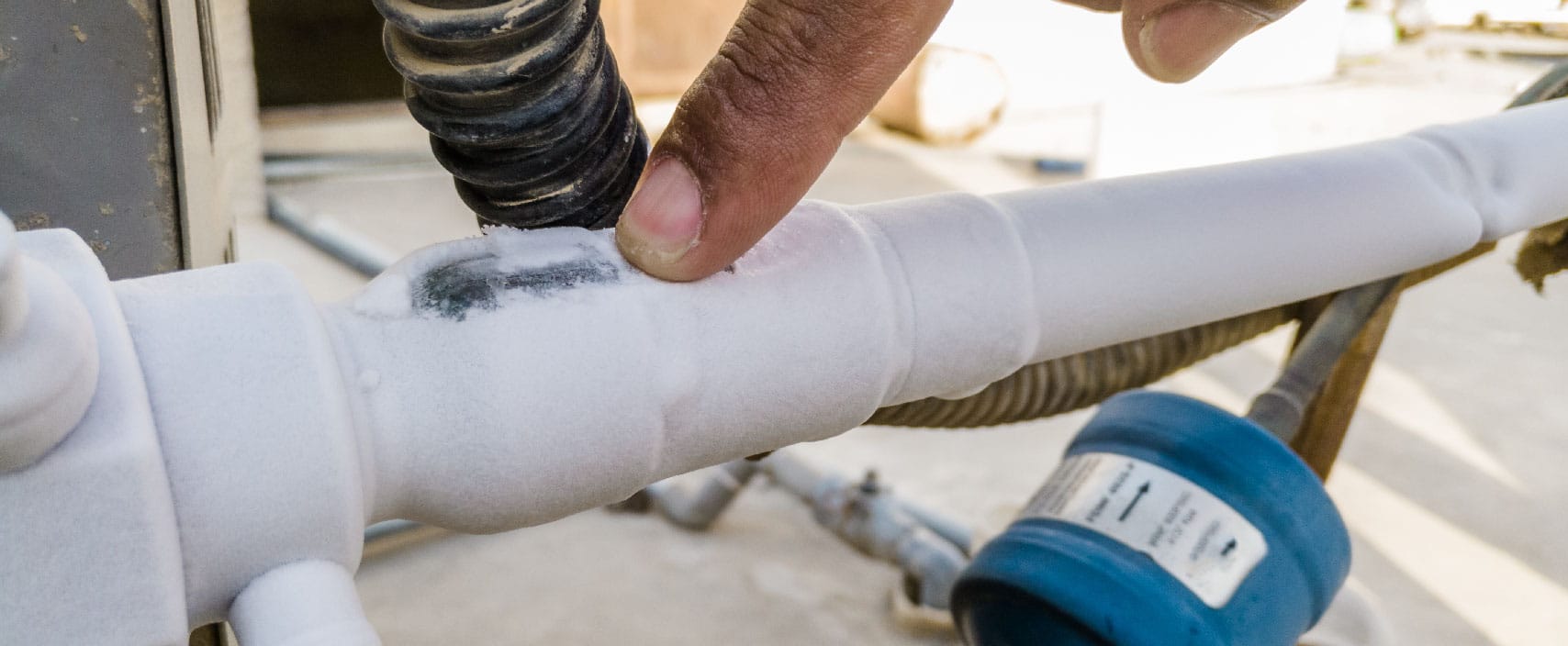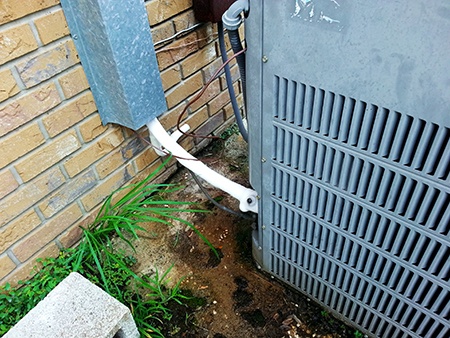Are you currently on the lookout for advice concerning Why Is Ice On My Outside Air Conditione?

Introduction
Uncovering that your a/c pipeline is frozen can be worrying, specifically during warm summer months when you depend on your air conditioning system one of the most. Understanding what to do in such a scenario is important to avoid further damage to your air conditioning system and ensure your convenience inside.
Recognizing the Causes
Numerous elements can contribute to the cold of an a/c pipe. Understanding these causes can aid you attend to the concern successfully.
Absence of Airflow
One usual reason for a frozen air conditioning pipeline is inadequate air movement. When the airflow over the evaporator coil is restricted, it can create the coil to go down below freezing temperature, leading to ice formation on the pipeline.
Reduced Refrigerant Levels
Not enough cooling agent levels in your a/c system can also result in a frozen pipeline. Low refrigerant degrees can create the pressure in the system to drop, resulting in the cold of wetness on the evaporator coil.
Winter Conditions
In chillier climates, freezing temperatures outside can add to the cold of a/c pipes. If your a/c system is not properly protected or if there are leakages in the ductwork, cool air can infiltrate the system, causing the pipeline to ice up.
Dirty Air Filters
Dirty or clogged up air filters can limit air movement in your a/c system, causing numerous problems, including an icy pipe. It's necessary to change or cleanse your air filters regularly to make certain proper airflow and protect against ice buildup.
Indications of a Frozen AC Pipe
Identifying the signs of an icy AC pipeline is crucial for punctual activity.
Minimized Airflow
If you notice a considerable decrease in airflow from your vents, it can suggest a frozen pipe.
Ice Buildup on the Pipe
Visible ice buildup on the refrigerant line or the evaporator coil is a clear indicator of a frozen air conditioning pipeline.
Strange Sounds from the Unit
Uncommon audios, such as hissing or bubbling, coming from your air conditioning device can signify that there's ice present on the pipeline.
Immediate Actions to Take
When faced with a frozen a/c pipe, it's essential to act promptly to avoid more damage to your air conditioning system.
Turning off the air conditioner
The very first step is to shut off your a/c unit to avoid the system from running and exacerbating the concern.
Looking for Blockages
Check the area around the interior unit for any obstructions that might be blocking airflow, such as furnishings or drapes.
Thawing the Pipe
You can use gentle approaches like positioning towels taken in cozy water around the icy pipe to assist thaw it gradually.
Preventive Measures
Taking safety nets can assist stay clear of future incidents of a frozen air conditioning pipeline.
Regular Maintenance Checks
Schedule routine upkeep checks with a specialist HVAC professional to make certain that your air conditioner system is running successfully.
Altering Air Filters
Regularly replace or cleanse your air filters to avoid air flow constraints and keep optimum performance.
Insulating Exposed Pipes
If your air conditioning pipes are exposed to cool temperature levels, take into consideration protecting them to stop cold throughout winter season.
Seeking Professional Help
If DIY methods fall short to solve the problem or if you're unsure concerning exactly how to proceed, it's ideal to seek aid from a qualified HVAC specialist.
When DIY Methods Fail
If your efforts to thaw the pipe or address various other problems are not successful, it's time to contact an expert.
Significance of Hiring a Professional HVAC Technician
A licensed HVAC technician has the expertise and devices required to detect and fix concerns with your air conditioning system securely and effectively.
Conclusion
Handling a frozen a/c pipeline can be a frustrating experience, but understanding exactly how to respond can assist reduce damage and restore comfort to your home. By recognizing the reasons, recognizing the indicators, and taking prompt action, you can successfully resolve the issue and stop future events.
What to Do If Your AC Line Is Frozen
Make Sure All Supply and Return Air Vents Are Open
If you notice problems with airflow, the first thing you should do is check your supply and return vents. Supply vents distribute clean, conditioned air throughout your home. As this air becomes stale, it’s pulled into the return vent, where it’s reconditioned before being sent back out through the supply vent.
When these vents are closed, air won’t flow in the home. Before examining your AC, check the vents in every room and ensure they’re all open.
Check for a Dirty Air Filter
Another possible cause of limited airflow is a dirty air filter. Your air conditioner’s filters catch elements you don’t want to breathe in, such as dirt and dust. Over time, filters can become clogged, ultimately blocking air from flowing in and out. The lack of airflow can then cause the entire coil to freeze and will completely restrict any air from moving through it. The AC may need to be powered off for one to two days to allow the coil to thaw after replacing the filter to allow proper functioning of the unit. This debris can also accumulate on your AC’s evaporator coil, requiring a more serious repair. In general, air filters should be cleaned regularly (about every two weeks).
Assess Your Outdoor Unit
In addition to checking your AC, assessing the outdoor unit is a good idea. Also known as the condensing unit, it works with your interior unit to release heat outside. An issue with the outdoor unit can result in rising internal temperatures.
Overgrown Shrubs or Clogged Leaves
From leaves and twigs to shrubs and debris, there’s no shortage of outdoor elements that can accumulate around your condensing unit. When these elements get lodged inside the unit, they can block airflow. Fortunately, removing the blockage can solve the problem.
Sounds of a Broken Fan
Shrubs and leaves aren’t the only things that can impede your outdoor unit’s airflow. If the fan is broken, the unit won’t be able to properly get rid of heat — which means the internal temperature won’t go down. First, make sure the fan is spinning. If it is, check for the following sounds of a broken fan:
Buzzing Rattling Screeching Hissing Clicking Preventative Measures
Nobody wants to deal with a frozen AC line. In addition to causing problems with your air conditioner, they require professional repairs. On the bright side, there are preventative measures you can take to help ensure this issue doesn’t arise in the first place.
https://www.coopergreenteam.com/blog/what-to-do-if-ac-line-frozen

Do you enjoy more info about Have a Frozen AC Line? Here’s How to Fix It? Put a remark further down. We would be glad to find out your thoughts about this posting. Hoping to see you back again before long. Loved our article? Please share it. Help another person find it. I value reading our article about Have a Frozen AC Line? Here’s How to Fix It.
Website